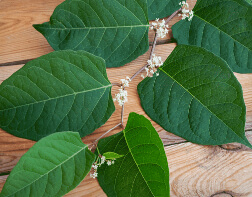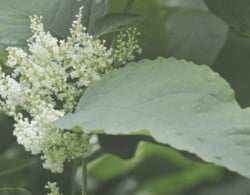They are controlling the Japanese Knotweed benefits.
While Resveratrol can be found in grapes, it is also in Japanese Knotweed. Japanese knotweed is considered a weed in most developed countries and is difficult to destroy. Information from the Pest Diagnostic Unit at the University of Guelph has some methods to indicate what Japanese knotweed is and how to control it from overrunning your garden should you happen to encounter it:
How to Identify Japanese Knotweed And How to Control It:
Japanese knotweed, Polygonum cuspidatum (P. Seibold), might be discovered in yards, in ignored or former yard websites, and in waste places. In some areas, it has escaped from growing to end up being an extremely aggressive, troublesome weed. This vigorous, handsome, bushy, sturdy perennial was developed as a screen and for the strong effect of its foliage and the clouds of whitish bloom in the late summer season. The plant is sometimes offered with the deceptive name “Mexican bamboo.” But It was not provided from Japan and is neither Mexican nor relevant to the bamboo. It belongs to the buckwheat family, which includes rhubarb, the decorative plants silver lace-vine and princes-feather, and such weeds as lady” s-thumb, smartweed, prostrate knotweed, curled dock, and sheep sorrel.
Japanese knotweed plants form globs and send long roots (underground stems) deep underground. New shoots grow from the seeds yearly and reach 3 to 9 feet high. Stems are round, smooth, frequently mottled reddish-purple, hollow between the nodes or joints, and may be branched or un-branched. The ocrea (sheath around the stem at each node) is membranous and soon breaks down. The stems and leaves return to the ground after the first hard frost. [1][2]
Leaves are generally ovate, 3 to 6 inches long and 2 to 5 inches broad, quickly pointed at the tip, and square-cut or a little angled at the base. The margin might be smooth or wavy.
Flowers are greenish-white and are borne in many-flowered panicles as much as 6 inches long, which emerge from the angles between the stem and leaf stalks in the upper part of the plant. The brown, glossy seeds have to do with 5/32 inch long and triangular in the sample.
How To Control If Found:
Japanese knotweed can be kept in bounds in the garden by digging out the rhizomes that reach beyond the clump. This should be done two or three times a year. Avoid applications of manure or fertilizer that promote the growth of the plant. It is resistant to 2,4-D and many (if not most) of the frequently used herbicides. Constantly cutting off all shoots as quickly as they appear will gradually remove the plant; however, this will take quite several years.
Glyphosate (Round-up) can be utilized and will undoubtedly offer control; however, it will damage everything it touches. It is safe to plant after using this herbicide. You can direct the control to the specific plants by brushing the product on the leaves of the unwanted plants or using an individual spray bottle.
References:
- https://www.sciencedirect.com/science/article/pii/S0896844609003581
- https://pubs.rsc.org/en/content/articlehtml/2016/nj/c6nj01294a








